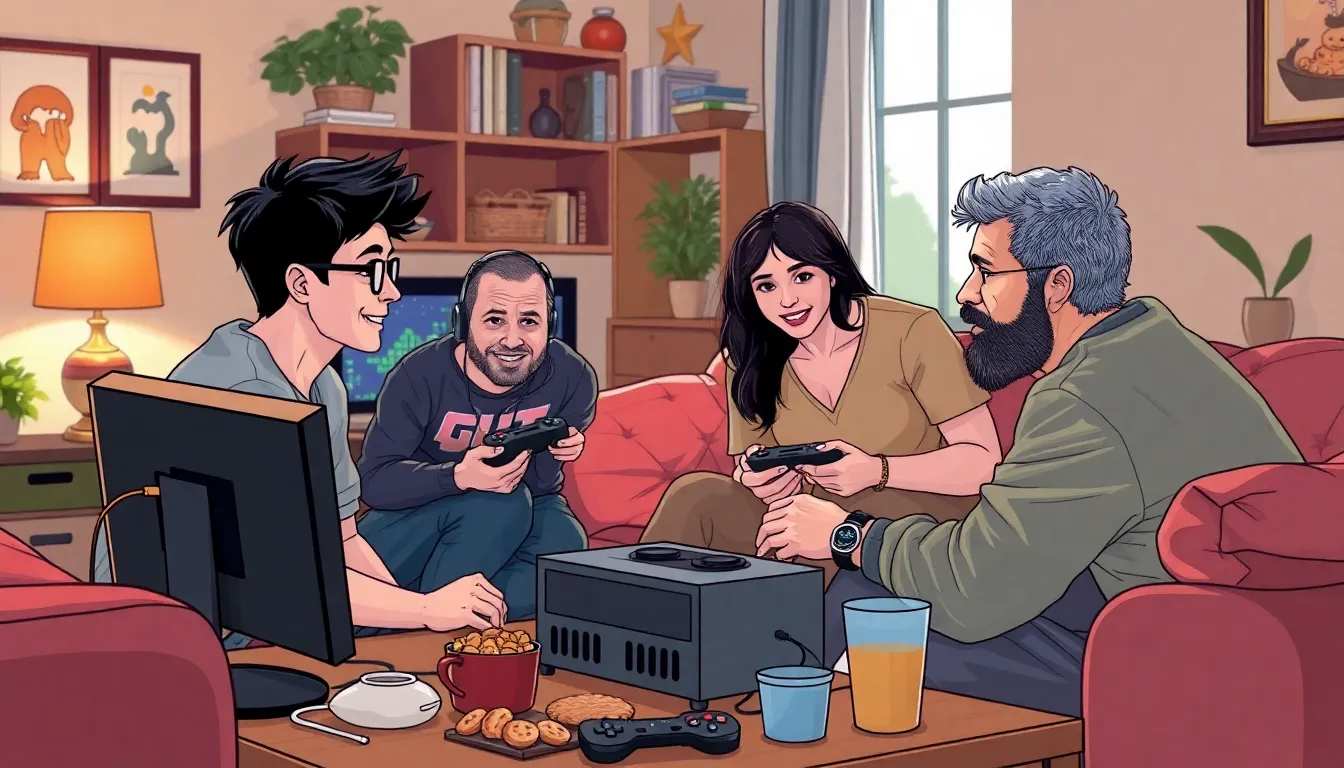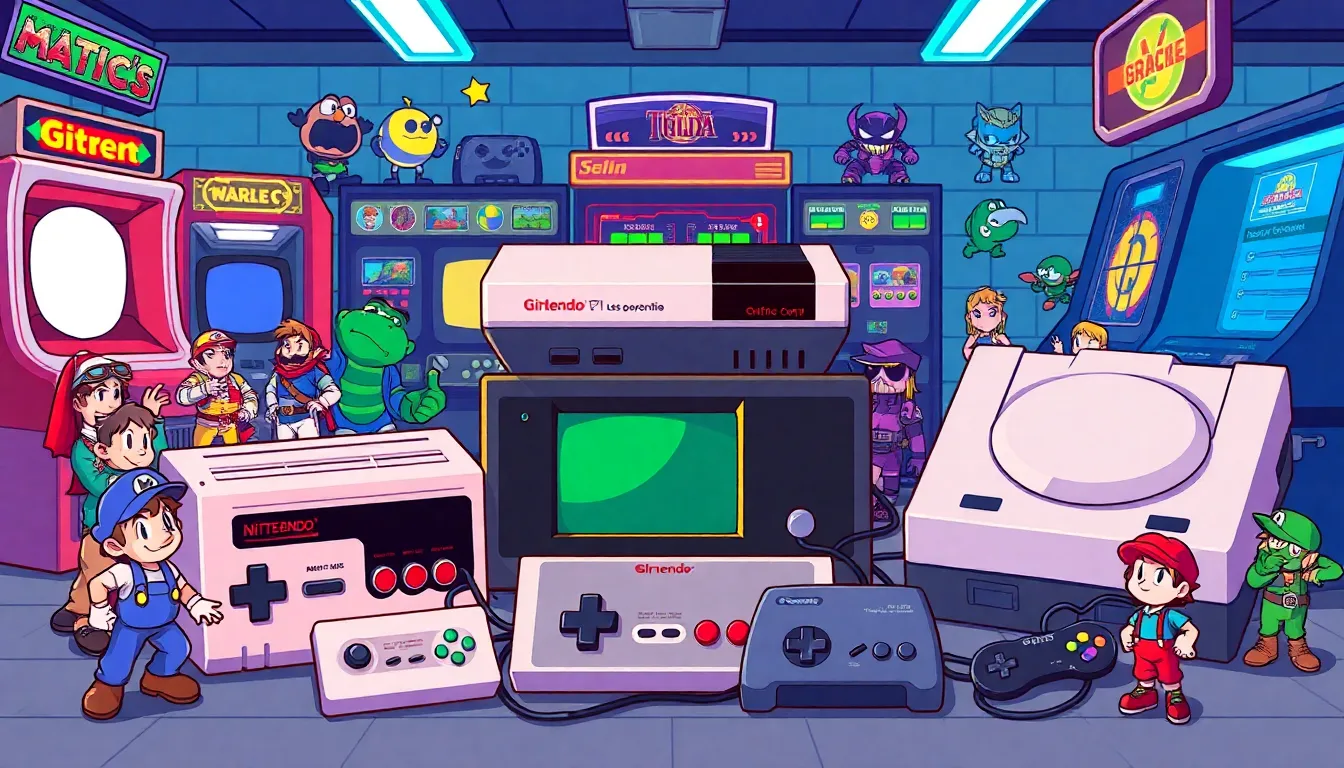Phone:
(701)814-6992
Physical address:
6296 Donnelly Plaza
Ratkeville, Bahamas.

In a world dominated by flashy graphics and high-octane gameplay, retrospective games invite players to hit the brakes and take a nostalgic joyride. These gems remind us that sometimes, less is more. With pixelated graphics and simple mechanics, they offer a refreshing break from today’s complex gaming landscape.
Retrospective games evoke nostalgia for players. These titles focus on simpler designs, making them stand out in today’s gaming landscape.
Retrospective games refer to titles that intentionally invoke the style and mechanics of earlier gaming eras. Graphics often feature pixel art, while gameplay relies on straightforward and easy-to-understand mechanics. Examples include platformers, puzzle games, and arcade-style games that emphasize skill over elaborate storylines. These games deliver an experience rooted in tradition, often focusing on fun and accessibility rather than complexity.
Retrospective games hold significant value within gaming culture. They serve as a reminder of gaming’s origins, highlighting the evolution from simple to complex. Many players appreciate these games for their ability to foster shared memories and connections. Indie developers frequently draw inspiration from classic titles, contributing to the revival of beloved genres. Ultimately, retrospective games encourage innovation while honoring the past, making them essential in modern gaming conversations.

Retrospective games have developed significantly over the years, creating a unique space within the gaming industry. These titles connect players to earlier gaming traditions while inspiring new experiences.
Several key milestones shaped the landscape of retrospective gaming. The 1970s introduced arcade classics, such as Pong and Space Invaders, establishing the foundation for interactive entertainment. The 8-bit era in the 1980s marked the rise of home consoles, with games like Super Mario Bros. and The Legend of Zelda gaining immense popularity. In the 1990s, 16-bit systems, such as the Sega Genesis, further expanded game design. The launch of the internet in the late 1990s allowed indie developers to emerge, reigniting interest in retro styles. Each of these milestones influenced modern game design, emphasizing the importance of nostalgia in contemporary gaming culture.
Many notable retrospective games have captured the hearts of players. Shovel Knight reinvigorated classic platforming mechanics with modern twists, while Undertale celebrated retro RPG aesthetics alongside innovative gameplay. Celeste, lauded for its pixel art and tight controls, echoed the past while introducing contemporary themes. Stardew Valley combined farming simulation with a nostalgic art style, drawing inspiration from earlier titles. These examples illustrate how developers merge nostalgic elements with fresh ideas, contributing to the ongoing evolution of retrospective gaming.
Retrospective games captivate players through their simplicity and charm. Players often find themselves drawn back to the enchanting experiences of their youth.
Nostalgia plays a crucial role in the appeal of retrospective games. These titles evoke cherished memories by referencing familiar styles and mechanics. Players reconnect with their past while exploring pixel art visuals and straightforward gameplay. Many cherish the sense of comfort and security provided by these games. For instance, iconic characters and familiar soundtracks can transport players back to simpler times. Games like Super Mario Bros. and Sonic the Hedgehog inspire emotional connections that modern titles often lack. As players engage with these experiences, they foster a community sharing reminiscent stories and interactions.
Gameplay mechanics and design in retrospective games often emphasize skill and strategic thinking. These titles prioritize clear objectives over convoluted narratives, fostering straightforward engagement. Levels designed with increasing difficulty challenge players while rewarding persistence. Intuitive controls ensure accessibility to diverse player demographics. Retro-inspired visuals combined with modern innovation create a unique experience. Many developers implement mechanics that encourage exploration and experimentation, reminiscent of classic arcade experiences. Titles like Shovel Knight and Celeste utilize simple yet rewarding gameplay loops that resonate with both new and veteran gamers alike. Such design choices contribute significantly to their sustained popularity in a rapidly evolving industry.
Retrospective games significantly influence modern gaming by revisiting classic design principles and aesthetics. They encourage game developers to embrace simplicity, emphasizing engaging mechanics and skill-based gameplay over complex narratives. Notably, the success of indie titles illustrates their impact on the industry, inspiring larger studios to incorporate retro elements.
Retrospective games shape game development by prioritizing accessibility and player engagement. Developers frequently employ pixel art and straightforward controls, which attract a diverse audience. Increased focus on mechanics over graphics allows games to resonate more deeply with players, leading to innovative designs. Games like Shovel Knight and Celeste exemplify this trend, seamlessly blending nostalgia with modern gameplay dynamics. Additionally, the revival of 8-bit and 16-bit styles fosters a renewed interest in classic genres, prompting developers to push boundaries while respecting gaming history.
Retrospective games successfully bridge generations of gamers, inviting both old and new players into a shared experience. Familiar mechanics resonate with older gamers, evoking memories of early gaming days. Younger players benefit from these experiences too, discovering the charm of simpler gameplay. Titles like Undertale and Stardew Valley foster connections among players of different ages. Community engagement further enhances the gaming experience, as players discuss strategies and share fond memories, creating a sense of belonging. Ultimately, these games help preserve gaming’s rich history while welcoming fresh enthusiasts into the fold.
Retrospective games serve as a vital link between gaming’s past and present. They remind players of the joy found in simplicity and skill-based challenges. The resurgence of these titles highlights a growing appreciation for the roots of gaming culture.
As developers continue to blend nostalgia with modern mechanics, the impact of retrospective games on the industry becomes increasingly significant. They not only foster emotional connections but also encourage innovation by prioritizing engaging gameplay over complexity.
In a world where gaming often leans towards high-end graphics and intricate narratives, retrospective games stand out as a testament to the enduring charm of classic design. They invite players of all ages to share in the magic of gaming’s history while paving the way for future creativity.